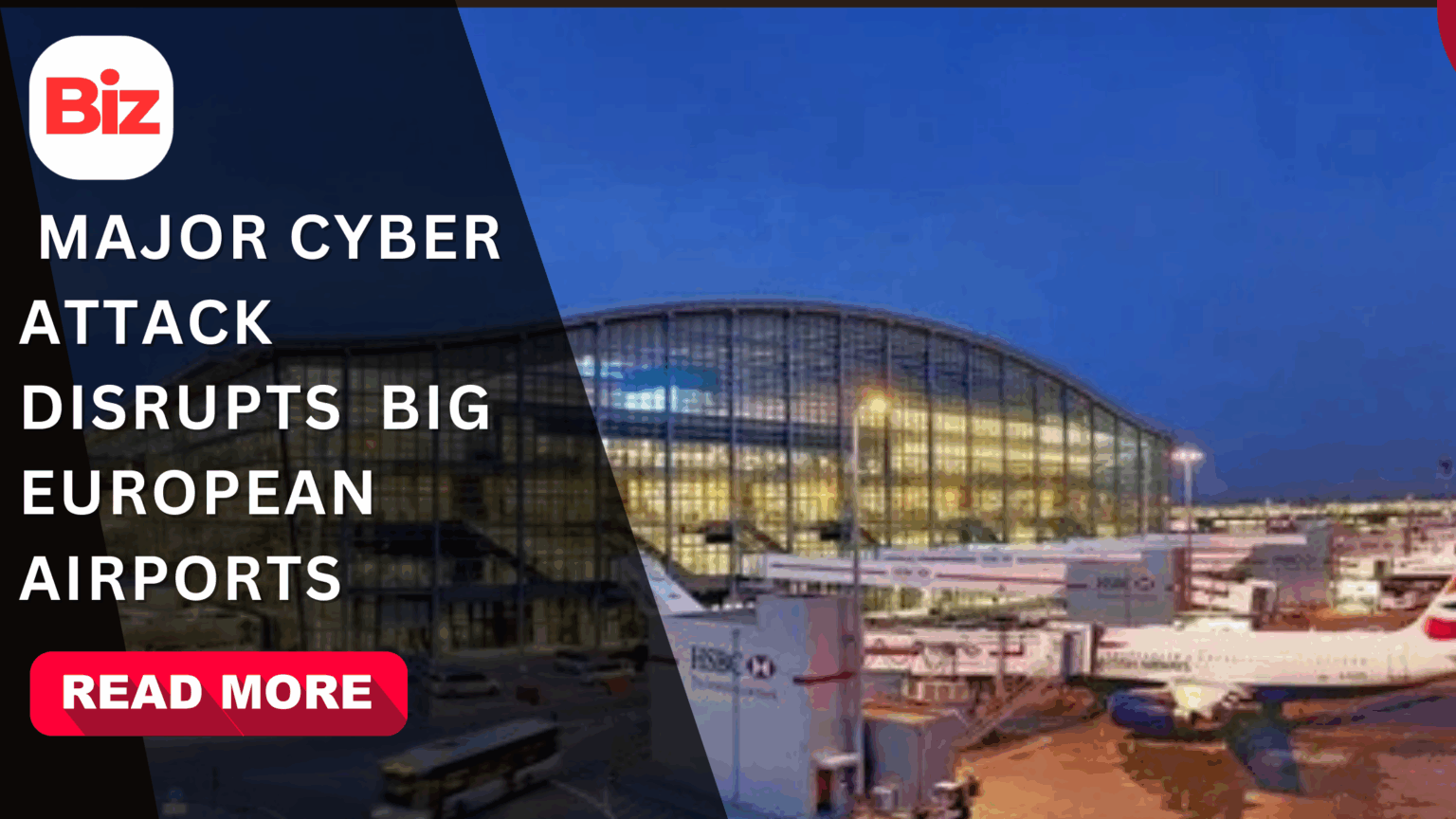A recent cyber attack that brought down check-in systems in Big European Airports woke up air travelers in Europe with confusion and frustration. What started late Friday night, soon coursed through the airline networks, and brought flights to a stop, delayed departures, and left thousands of passengers without a way to get home.
The case is one of the most recent and severe cyber attacks on the European transportation structure. It has brought back the argument of digital security, reliance on centralized software platform, and the increased fragility of critical infrastructure across the globe.
Chaos in Big European Airports
Multi-User System Environment (MUSE) which is a passenger management system that is owned by Collins Aerospace was the focus of the attack. MUSE also does digital check-ins as well as boarding passes and baggage.
Airports could do little but to switch the system to manual operations when they were crippled by the hackers. There were paper check-ins, luggage was tagged manually, and passports were checked at slower and physical counters.
Even the most efficient operations were overcome by this sudden withdrawal. At one of the most busy and the busiest hubs in the world, London Heathrow, passengers reported that queues would go hundreds of meters long, and some people have missed connections despite reporting to the airport hours before departure.
The cancellation had been even more significant in Brussels where dozens of cancellations were made. Airlines were scrambling to have their passengers rebooked, however, many were left overnight in airport terminals. Flights were still made in Berlin and Dublin with delays of hours. The mayhem in every busy European airport was a lesson that aviation is dependent on high-complex interconnected systems that can be disabled within a minute.
An Increasing Trend of Latest Cyber Attacks.
The airports attack on Europe is not an isolated incident. Cybercrime during the last ten years has developed as a small scale hack to a disruption of infrastructure and vital services worldwide.
The recent cyber attacks have included some noteworthy attacks, which include:
- CDK cyber Attack (2024)
Hackers attacked CDK Global, a firm that supplies IT systems to thousands of car dealerships in the United States in June 2024. Sales, financing, and repair services were stalled weeks because of the ransomware attack. The dealerships had to revert to the use of pen and paper transactions, which cost the industry hundreds of millions of dollars. - Colonial Pipeline Attack (2021)
The Colonial Pipeline ransomware attack is one of the first wake-up calls to infrastructure security and it disrupted fuel distribution along the U.S. East Coast. Panic purchasing resulted in shortage of gasoline in several states. The end result was the company had to pay millions in ransom to have its systems restored. - Health Service Executive (HSE) Breach (2021), Ireland.
An attack by ransomware affected the national health service in Ireland and ensured hospital appointments were cancelled, treatments were delayed, and the system went back to hand written records. Patient information was also stolen including sensitive data, which indicates that healthcare could not withstand cybersecurity weaknesses. - WannaCry Outbreak (2017)
WannaCry is a global ransomware that infected hundreds of thousands of computers in 150 nations. Surgeries and emergency diversion were cancelled and the National Health Service (NHS) in the UK was especially affected
The reason why Airports are the best targets.
The European busy airport has tens of thousands of passengers each day. Any congestion is felt to spread–to other flights, luggage management and even border guards. Hackers are aware of this advantage. Airport paralysis allows attackers to generate instant international publicity and benefits the economy and political influence to maximum.
Airports do not have a backup system that is as strong as that of financial institutions, as the latter usually has; they rely on unique software, such as MUSE, which is difficult to substitute. By the time it gets compromised, the staff will be left with little to do but outdated manual processes.
As experts alert, even in high profile cases attackers might not go in search of ransom. Instead, they may want to show strength, destabilize economies, or explore surfaces in readiness to do so in future operations.
Lessons Learned from Past Cyber Attacks.
Going back to the recent cyber attacks, a few lessons can be used with regard to the disruption of the airport nowadays:
- Single Points of Failure: The same way the Colonial Pipeline attack showed how vulnerable the fuel supply of America was, the current attack demonstrates that the dependence on a single software provider, Collins Aerospace, can stop the activity of several countries.
- Slow Recovery: The case of CDK Global and HSE Ireland attacks proved that the restoration of systems is not quick often. Restoring public confidence, integrity of data and rebuilding IT systems may require weeks or months even after the hackers are contained.
- Interconnectedness of the world: WannaCry made malware go across the borders within hours. Similarly, the cyber attack of the airport impacted several countries at once, which serves as a reminder that the most important systems are closely interconnected in Europe.
Extremely high Human Cost: Ransomware is often viewed as an IT problem, but the human cost can be seen in the case of patients that do not receive surgeries (HSE Ireland) or passengers that cannot find new ways to leave airports. The inconvenience at congested airports in Europe today is not only speaking of flights but also of people missing out on wedding, medical visits or even business opportunities.
Governments Respond
The incident is under investigation by the authorities in the EU and the UK. The cybersecurity departments are trying to establish whether it was the handiwork of state-backed hackers or organized cybercriminals. No one has so far owned up.
The event was termed by the European Commission as a wake-up call as it assured more stringent cybersecurity standards to aviation. The British officials noted the necessity of having a robust digital infrastructure at major airports in Europe, and the German and Irish authorities implemented more IT support units.
Travelers are being urged to:
- Report to airports earlier than normal.
- Keep track of the changes in the airlines.
- Expect constant failures as systems are restored.
Looking forward: Bigger Attacks than Bigger?
The future of airports is a matter of urgency that is posed by the attack. Through their recent cyber attacks, pipelines, hospitals, dealerships and, currently, large European airports can be taken down; is the next thing?
Analysts caution that water supply, power systems and even banking systems are still at risk. Most of these systems are based on old software, old defenses and the use of central providers which may become single points of failure.
There is an increase in investments in cybersecurity that is however not enough according to experts. The aviation industry is no exception: this industry is characterized by thousands of daily transactions, the need to cooperate with other countries, and reliance on the outdated systems, which were created decades ago.
Conclusion
The cyber attack of the European airports in September 2025 is a cold shower to realize how digital threats can bring the world infrastructure to a halt. To those passengers stuck at the airports it was a draining, irritating experience. To governments and businesses, the lesson of this wake-up call reiterates the past lessons of previous attacks – both Colonial Pipeline and WannaCry.
The aspect of scale is what is interesting about this case. Hacking big European airports, the hackers did not only disrupt the lives of one country but millions of lives at the cross-border level. And like in other recent cyber attacks, the bottom line is obvious, cybersecurity is no longer a luxury. It plays a key role in the operation of the contemporary society.








